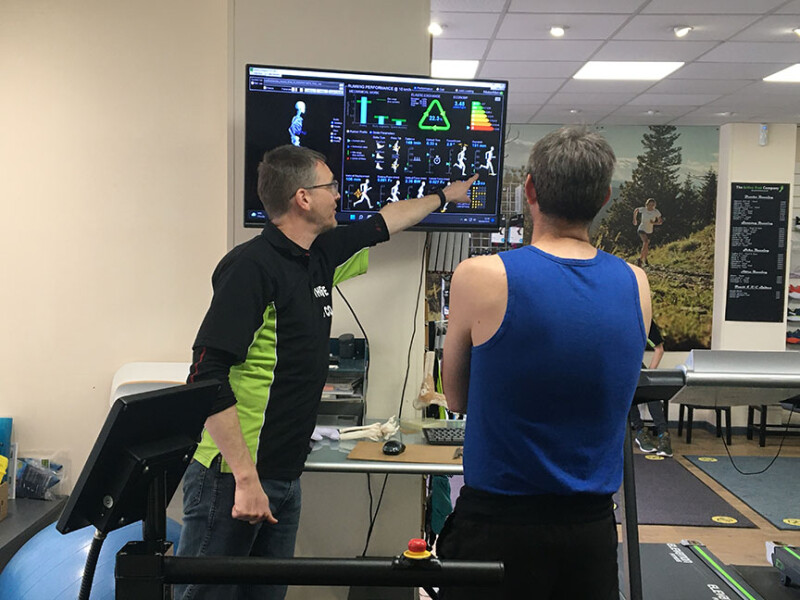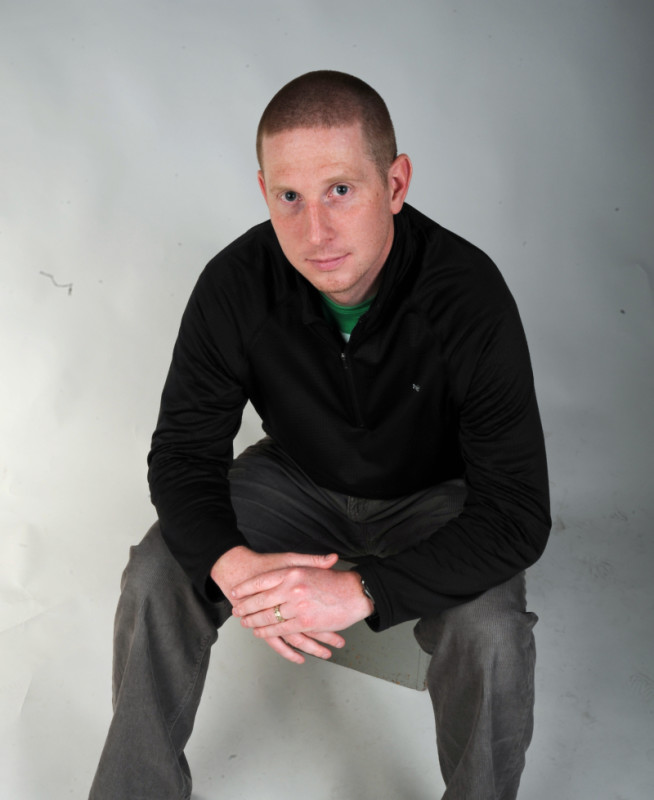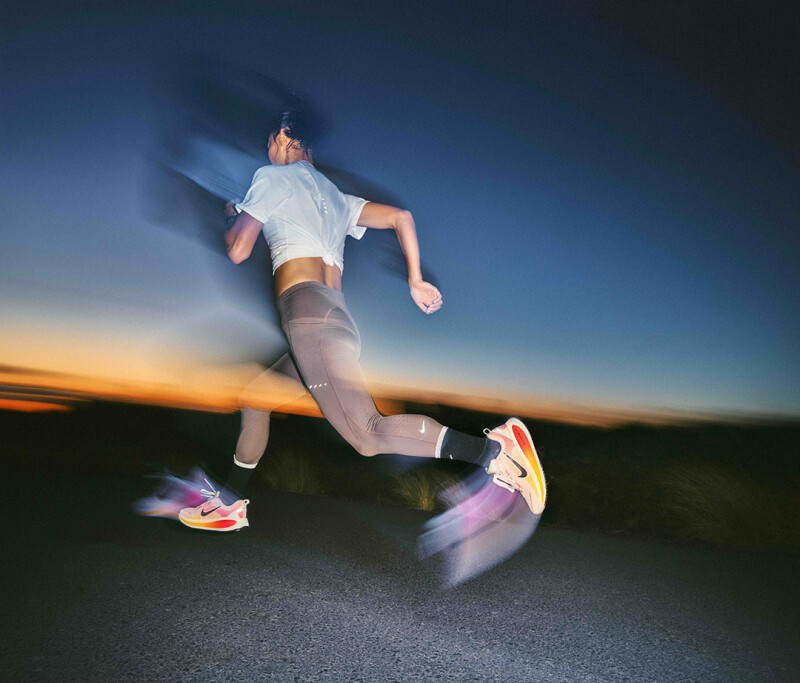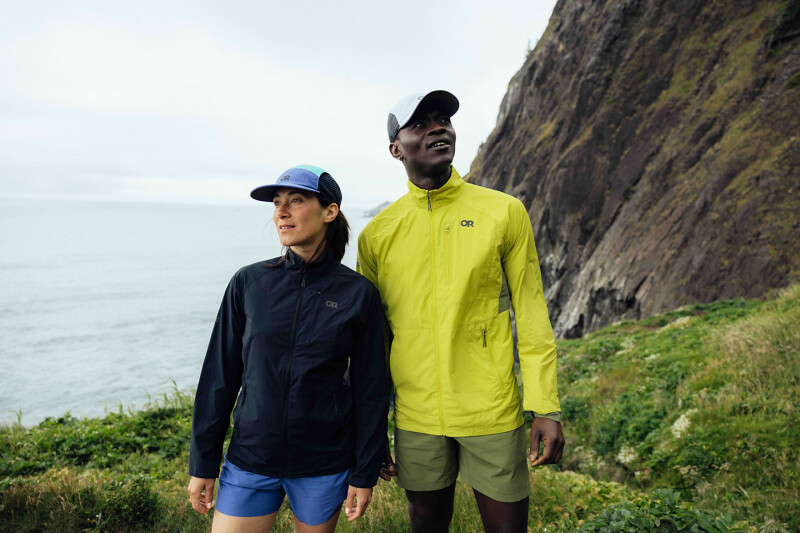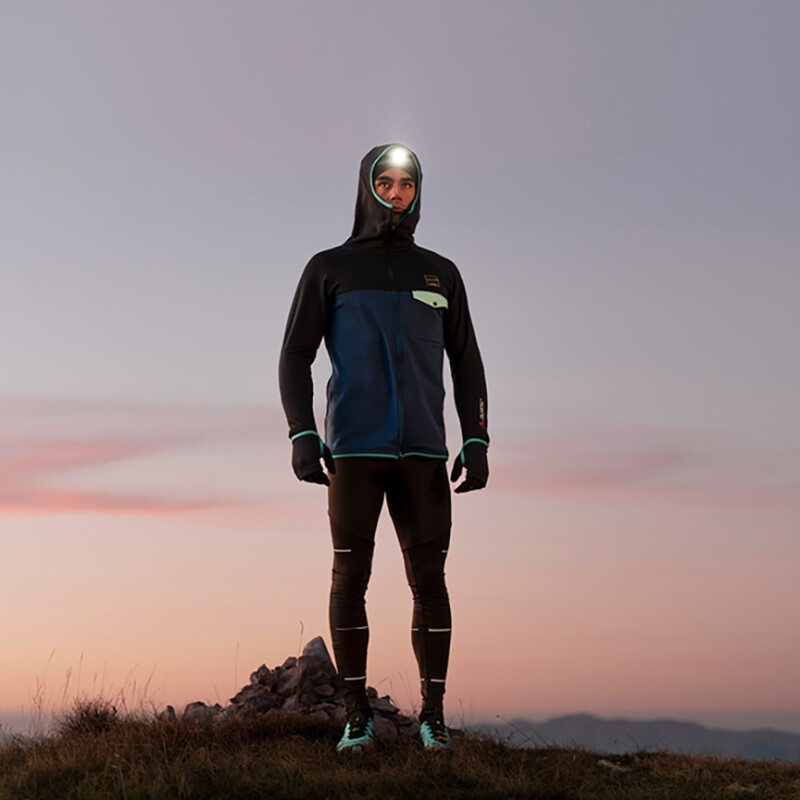The use of technology in selling shoes and servicing runners is, of course, not limited to run specialty stores in the U.S. In fact, at The Active Foot Company in Worcester, England, a 100,000-resident city located about 130 miles northwest of London, a high-tech running analysis solution is propelling the 21-year-old specialty shop’s efforts to help local athletes and diversify its revenue streams.
Just over a year ago, Active Foot invested more than $20,000 in a suspension-less treadmill that mimics road running, two infrared cameras and the detailed MotionMetrix markerless motion capture system to bring its customers a comprehensive biomechanical profile capable of spurring more economical, efficient and healthier running.
A 60-min 3D analysis runs £70 ($88 U.S.). That includes an in-depth gait and technique analysis, a copy of the session report and an immediate conversation about the runner’s movement in relation to individual goals or concerns. The session highlights efficient movement, overworking joints and underworking technique.
A 90-minute session costing £125 ($158 U.S.), meanwhile, layers in a coaching component. After reviewing the collected data, an Active Foot coach will suggest “a more effective run action using timing exercises, drills and posture cues” and also recommend pre-run and post-run routines to encourage more efficient running action aligned with racing and training goals.
“This kind of in-depth study isn’t being provided around us, so we’re filling a need,” says Andy Stevens, a Minnesota ex-pat and Active Foot team member for the last decade.
The MotionMetrix Method
When an athlete arrives, Stevens or another Active Foot coach begins by discussing the individual’s running history, current training level, goals and injury history as well as the customer’s occupation, which can affect posture and running technique. Then, the coach will direct the athlete to the treadmill and capture a 45-second running sample.
The MotionMetrix system provides a recording of the runner alongside skeletal views from two different angles – frontal plane and side plane – in addition to a wealth of data points on running economy, elastic economy and a runner’s stride parameters, which includes information on cadence, ground contact time, vertical force and other key metrics. The system also compares each runner to an algorithm-fueled “idealized runner” to quickly identify specific areas of note.
“We walk runners through each metric to define what we’re talking about, see where we’re off and where we can improve,” Stevens says.
While the store’s 60-minute session is the more in-demand option and secures 8-10 weekly bookings, word of mouth continues fueling interest in both the 60- and 90-minute offerings. The sessions have gained popularity among performance-oriented athletes, though Stevens says intrigue extends beyond the hyper-elite.
MotionMetrix customers run the gamut from people who are simply curious about what they look like to those eager to avoid past injuries to physical therapists geeked to see the system’s detailed analysis.
“And it’s neat seeing people’s reactions,” Stevens says. “People are blown away by all the information and excited to learn more about how they run and how they can improve.”
Additional Revenue Opportunity
While Active Foot added MotionMetrix as a service to help local athletes, Stevens acknowledges its revenue-generating role as well. And given the sizable investment the store made in the system and the personalized guidance it enables the shop’s coaches to provide athletes, he says there was never a question about attaching a price to the analysis.
“With the brands rushing to sell direct to consumer, this is a hedge against that and a way to diversify our revenue potential,” says Stevens, noting that his store, like numerous other independent run shops across the United Kingdom, also charges a footwear fitting fee. (At The Active Foot, for instance, that fee is applied as a credit to any same-day footwear purchase.)
And while The Active Foot, of course, sells shoes and MotionMetrix participants often purchase product during their visit, Stevens says the store did not install the high-tech system simply to generate footwear sales.
“In fact, this has nothing to do with running shoes because shoes don’t make the runner,” he says. “Our philosophy is that running is a skill and we’re most interested in helping people move better.”
